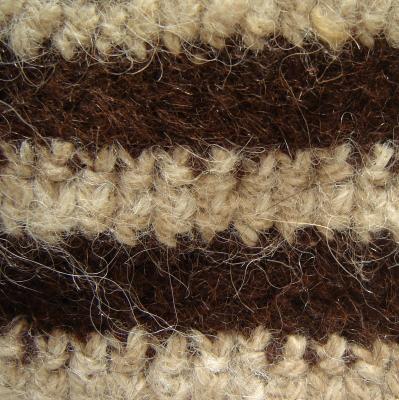Felting with the Boiled Wool Method
by Callie Ketner
(Naples, Idaho, United States)

Felted Alpaca, Possum, Camel
For this cap and most of my caps, I needed a process to tighten and soften the stitches for better feel and fit. Having Woolcrafting bookmarked for the plethora of information it provides me in every topic, I decided to use the boiling method of felting as it seemed to me it would be an easier way to monitor progress. It is! I love it.
If you can get past the smell and keep an eye on the clock it is the perfect way to "gently" felt. All you need are tongs, pot of water, bowl of cold water and your crocheted item. I'm quickly learning about the individuality of different fibers I use, from yak to camel, possum, alpaca, merino, mohair, etc...
I'm posting a shot of the felted stitches of my natural handspun alpaca & New Zealand possum/camel cap that is the ultimate in soft & made for wearing against the skin. I coupled amazingly soft natural handspun alpaca yarn with an equally soft and silky natural handspun Camel purchased locally in North Idaho. I find felting camel fiber gives it more of a silkier and softer feel.
The espresso colored yarn is New Zealand Possum; know for its warmth. This fiber takes on a cashmere feel when gently felted - I promise!!
You can see this whole cap and others I've felted using the boiling method at my shop at Brown Creek Exchange on Etsy.
All my caps, with the exception of a few bright colorways, are felted using the boiling method. It works great! Thank you!!
Comments for Felting with the Boiled Wool Method
|
||
|
||
|
||
|
||